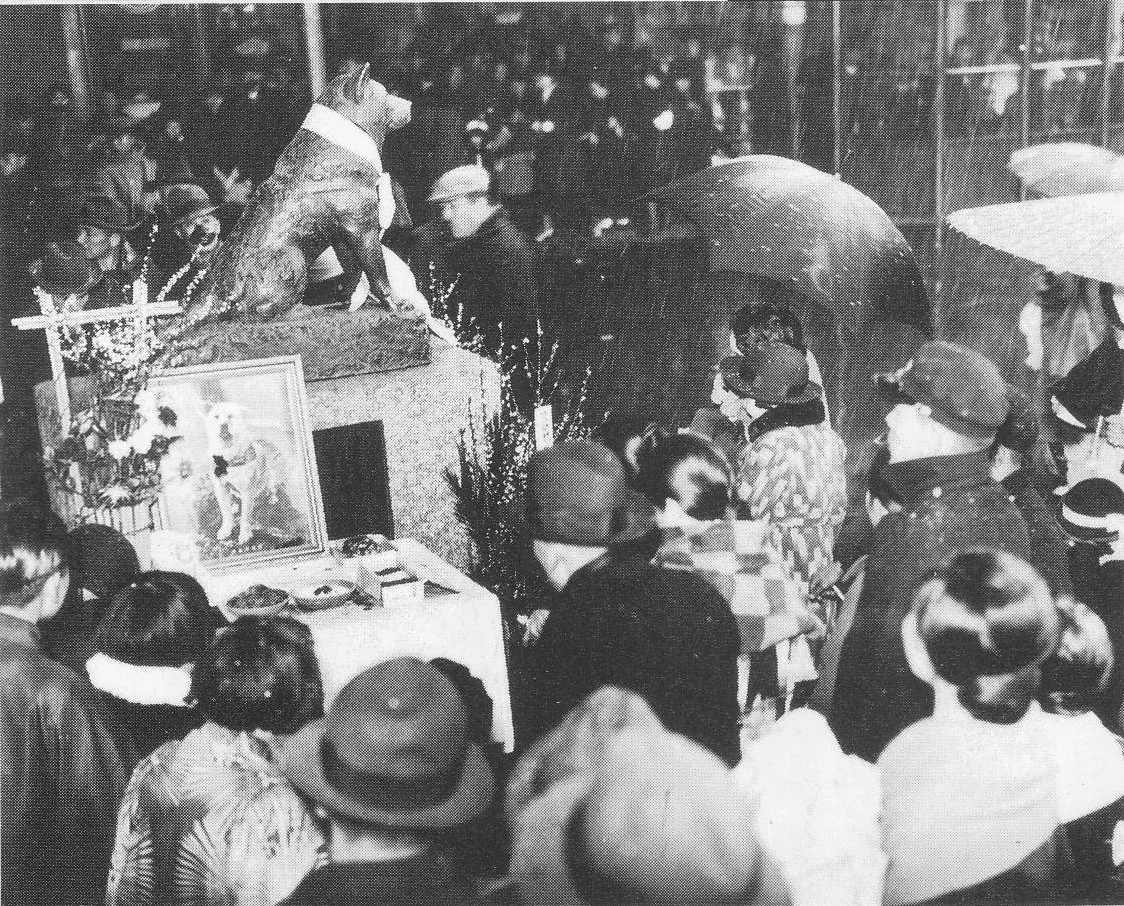If summer travels have you rolling through Keystone or kicking back with the Kiwis; ambling Central Park or hitting the Scottish links; if you’re tucking into Tokyo, you should have no reservations about a jaunt to one of these monuments to animal companions:
Where no one had gone before. Mrs. Chippy may have had an inkling that he’d be part of history. Or, perhaps he couldn’t bear being separated from his human, Harry McNish. When the carpenter for the Endurance — the ship Earnest Shackleton sailed to Antarctica in 1914 — found his tabby curled up in one of his toolboxes, destiny was sealed. Mrs. Chippy (who turned out to be male) was an indispensable mouser in defense of the crew’s food stores and proved an inspiration to crew members as ice crushed the doomed vessel. The expedition eventually achieved its goal, but cost Mrs. Chippy and every sled dog their lives. Mrs. Chippy’s likeness sits atop McNish’s grave in Wellington, New Zealand.
When the going gets tough, the tough get mushing. In 1925, a diphtheria epidemic ravaged the remote city of Nome, Alaska. The only known preventive serum was in Anchorage, 537 miles away. When severe weather conditions grounded flights, the serum was ferried by train to Nenana. From there, a Siberian husky named Balto led a team of sled dogs piloted by mushers through perilous terrain and whiteout conditions to deliver the serum. Rudolph may guide Santa’s sleigh, but it was Balto who saved Nome’s day. Balto’s bronze likeness may be visited in New York’s Central Park.
Whose town is it, anyway? Hamish McHamish, a ginger tom, was not unhappy nestling with his human in Saint Andrews, Scotland. However, when he was about a year old, Hamish began taking daily sojourns into town, cozying up to neighbors and shopkeepers who showered the cat with love and food. His popularity soared. Tourists posted pix of themselves with the wayward feline on social media. A local news publisher launched a campaign that raised $8,000 to erect a statue marking his unofficial adoption by the town’s residents.
He waited — forever. Each day for two years, Elizaburo Ueno’s Japanese Akita, Hachikō, waited at Tokyo’s Shibuya Train Station for Ueno to return from work. In May, 1925, the professor of agriculture at Tokyo Imperial University suffered a fatal stroke while teaching. Never again would he return home. Undaunted, Hachikō kept vigil at the station every afternoon at 3 PM. Though re-homed after Ueno’s death, Hachikō returned day after day, waiting in vain for his human to appear. Media reports of the dog’s story drew crowds from around the world; Hachikō became an international symbol of loyalty. Only his own death on the streets of Shibuya nine years later stopped the ritual. A bronze statue of Hachikō was dedicated at the Shibuya Train Station in 1935. It was destroyed during WWII, but remade in 1948.
One-of-a-kind mass memorial. If you pass through Mechanichsburg, Pennsylvania, stop and stroll the pastoral grounds of the Pennsylvania State Pet Memorial (PSPM). Established in 1996, PSPM is the only statewide pet memorial in the U.S. Its centerpiece is a Wall of Remembrance upon which the names of more than 24,000 pets are inscribed.
On September 24, 2020, the U.S. House of Representatives introduced a bill “to recognize the heroic deeds and sacrifices of service animals and handlers of service animals in the United States, and for other purposes.”
HR 8379 would create a national monument to honor the heroic deeds and sacrifices companion and other animals have played during wartime, natural disasters and everyday life. No federal funds will be required to design, create or place the monument. As of this writing, the National Service Animals Monument Act is pending action in the senate.
Concrete and bronze tributes are magnificent to behold — especially when we know the real mettle supporting them.
Check out future blogs for leads to more iconic pet statues.

